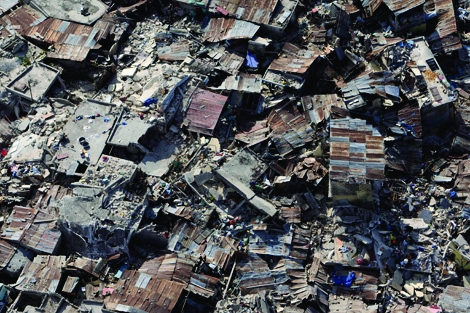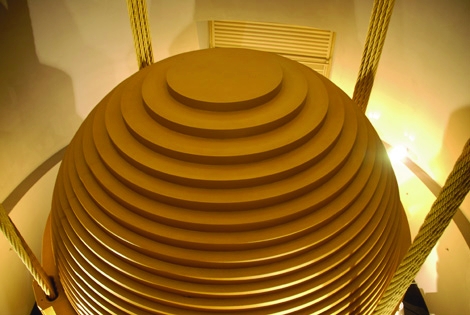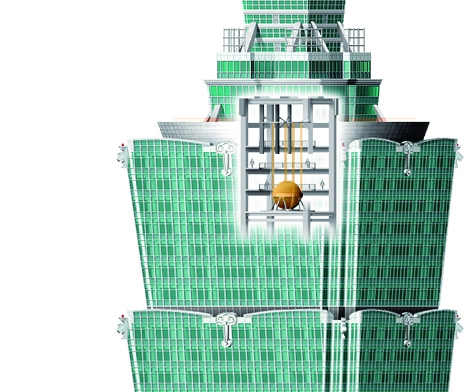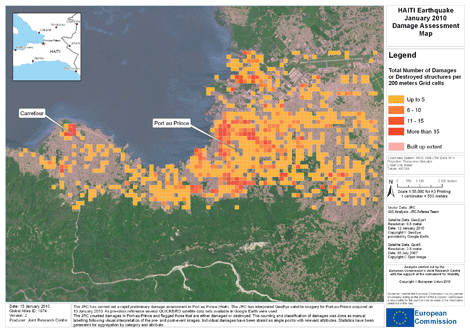
The aftermath of last month’s Haiti earthquake appalled the world. The 7-magnitude tremor on 12 January, and its subsequent aftershocks, caused widespread damage in the capital, Port-au-Prince, and its surroundings. As The Engineer went to press, some 20,000 commercial buildings and 225,000 residential buildings were believed to have been destroyed, while the death toll exceeded 200,000.
What role can engineering play in earthquakes? It is quite obvious that it can help. Earthquakes of similar magnitudes in richer countries, where there are resources that can be devoted to seismic monitoring and earthquake-resistant buildings, generally see much lower death tolls, typically in the hundreds or lower. Engineering in poorer countries is a quite different matter, however.
RedR, an organisation that sends engineers into disaster zones to assist with humanitarian efforts and reconstruction, has a great deal of first-hand experience. Rumana Kabir, a RedR specialist in post-earthquake reconstruction, said that much of the problem is due to a lack of building codes or, where they do exist, a lack of enforcement. Read our 2008 interview with RedR chairman Robert Hodgson here.
Kabir was involved with reconstruction following the 2005 earthquake in Kashmir, which affected the Pakistani part of the region. ’There was a previous major earthquake there, in 1943, when it was still under British control, after which the adminstration did establish a building code,’ she said. ’But we only discovered it after the earthquake. When we talked to engineers, we found that it had initially been enforced, but slowly the government officers just let the people build any way they wanted. There were a lot of problems with corruption and the regulatory bodies weren’t actively taking part in establishing and enforcing the codes.’
You have to let go of certain standards, just to get the shelter up and available to displaced people
Rumana Kabir, RedR
This state of affairs is sadly typical of poorer countries, but in the case of Haiti there was another factor at play: although the country is on a known tectonic fault line, there hadn’t been an earthquake there for 250 years. The Enriquillo-Plantain Garden Fault, between the North American and Caribbean plates, had been locked motionless for this period, during which stress steadily built up in the fault. ’Memory fades,’ said Ian Main, professor of seismology and earth physics at Edinburgh University. ’There are other priorities for spending money and, in poor countries, engineering for earthquakes tends to be neglected. Low preparedness is typical.’
Traditional building techniques can be both a help and a hindrance, said Kabir. In many earthquake-prone regions of the world, such as South Asia and Latin America, the predominant building material is adobe, made from mud and straw. ’You don’t get any building codes for that,’ she added. ’They tend to only apply to urban housing, made from bricks and mortar and concrete; there are no guidelines for self-built houses in rural areas. The main cause of collapse there was the heavy roof falling off. People kept maintaining their houses with layer after layer of mud plastering and the roofs got heavier and heavier, but mud construction is brittle and earthquakes just make them collapse, often crushing the people inside.’
In some regions, traditional techniques are inherently earthquake resistant but, even then, some well-meaning legislation can have unforeseen consequences. ’In Indonesia, after the tsunami, everyone knew that traditional timber houses had many good features that made them more earthquake resistant, but there was a ban on using local timber to protect the Indonesian rainforest, so they couldn’t rebuild in the traditional style,’ said Kabir.
She believes that looking at best practices around the world and trying to introduce methods related to traditional techniques in a particular region might help to reduce fatalities. ’There are houses in Switzerland and Turkey, for example, that have mud construction but also use timber; they’re based on a wattle-and-daub construction with woven walls, very lightweight construction, which is then plastered with mud,’ said Kabir. ’I was with the organisation UN Habitat at the time and we spent nine months lobbying the Pakistani government and local engineers to show them how this could make traditional houses stronger. We had to provide engineering evidence and calculations and show examples from these other countries to convince them that this helped with earthquake resistance. But it took two years to convince them completely.’
Politicians want clear-cut answers when it comes to spending money, and earthquake engineering isn’t in the public consciousness often enough to persuade the government to spend money on that
Ian Main, University of Edinburgh
The issue of preparedness is one that concerns Main, who was the UK member of an Italian presidential commission on earthquake forecasting for civil protection in the wake of the L’Aquila earthquake in April 2009. ’We were looking at whether you can use seismic information, such as the fact that there had been a swarm of small tremors before the L’Aquila quake, to determine whether you can give a warning of a major event,’ he said. ’But the question is, what do you do with the information? Do you tell the population there’s a one per cent chance of a big earthquake that year? What would they do? And what does a one per cent chance of an earthquake actually mean?’
The problem is that earthquakes are statistically unlikely in virtually every part of the world — it’s more likely that there will not be an earthquake on any given day than there will be, even in seismically active areas. ’It’s low probability but high vulnerability; an earthquake isn’t likely, but if it does happen it’s likely to be catastrophic,’ Main explained. ’But that sort of situation is very hard for governments, even in more affluent areas. Politicians want clear-cut answers when it comes to spending money, and earthquake engineering isn’t in the public consciousness often enough to persuade the government to spend money on that, rather than on a hospital.’
Even so, earthquake research is looking at ways that buildings can be made safer, even in poorer areas. Gopal Madubhishi of the Schofield Centre at Cambridge University operates a research facility that uses a 10m-diameter centrifuge to simulate the effects of earthquakes on scale models of buildings, particularly aimed at looking at how the foundations interact with shaking ground. ’The centrifuge can generate forces 100-150 times Earth’s gravity and we scale structures down by the same factor,’ he said. ’So when we spin our model, it behaves as though it had the weight of the full-size structure.’
As the model spins, a specially designed device known as a stored angular momentum (SAM) earthquake actuator shakes the model to simulate an earthquake. ’We’ve been doing this for 35 years and our actuators are getting better and better,’ said Madubhishi. ’So are the monitors — we use the same type of camera that’s used in cricket to show the vibration of the bat, which operates very fast, around 1,000 frames per second.’
You can improve the structure of even simple structures using innovative engineering and it doesn’t have to be expensive
Gopal Madubhishi, Schofield Centre, Cambridge University
Much of Madubhishi’s work is to test the foundations of new buildings or to see how existing historic buildings can be made more earthquake resistant, but some work has been conducted into traditional buildings. ’One thing that we have found is that adobe can be made more ductile and, therefore, more earthquake resistant, if strips of plastic from carrier bags are incorporated into its structure,’ he said. ’You can improve the performance of even simple structures using innovative engineering and it doesn’t have to be expensive — this technique won’t stop the building from being shaken to bits, but it will hold it together for long enough to get people out. However, we need a lot more of that kind of research to help these countries.’
Another possibility is to make the ground itself stronger. A major problem in earthquakes is soil liquefaction, where the tremors cause loose and gravelly soils to behave like a liquid. In L’Aquila, this made sewage pipes rise to the surface; in Port-au-Prince, it caused buildings to sink into the ground. However, Madubhishi’s team has explored a technique called soil densification, where the ground is compacted (paradoxically, using high-frequency vibration) to stop liquefaction occurring. ’You can quantify the benefit, but there aren’t any specific design guidelines on how much soil you have to densify,’ he said. ’We showed that if you densify twice the area of the building, you get the maximum benefit; larger areas don’t have a greater effect.’
For Haiti, this is a critical time for engineers to advise on how to rebuild, said Main. ’This is a window of opportunity,’ he added. ’You have to go in now because, even in just a few years, memory will fade. But the engineers’ role in a poor country is always a difficult one. There’s a big educational role for engineers when they’re taking on projects such as this; even if they aren’t asked about future seismic risk, they can ask themselves. And Haiti is so vulnerable to other natural disasters, such as hurricanes and landslides.’
A consequence of the shocking pictures from Haiti is the response from public fundraising and non-government organisations (NGOs). ’These organisations have started funding seismic research themselves,’ said Main. ’There are simple things you can do such as testing the natural resonances of the soil. You can do that with background noise and that will tell you about where to site the building and how to build on that site. You can make informed choices about materials.’
However, Kabir believes that there could still be pitfalls. ’You have a lot of NGOs on the ground and it’s important to avoid them getting into competition with each other,’ she said. ’If you want to build 10,000 houses and there’s a shortage of skilled labour, then you can’t enforce guidelines. You have to let go of certain standards, just to get the shelter up and available to displaced people. It’s very important to have suitable but simple design and basic messages to put across to ensure that building goes quickly but in such a way that the buildings aren’t vulnerable to future quakes.’
Main believes a hopeful message must comes across. ’There is no doubt, none at all, that something can be done,’ he said. ’In California in 1989, a magnitude-7 quake killed 63 people and that was because of an extraordinary event: a freeway collapsed. Death tolls such as Haiti don’t happen in California. We can do something about this.’
Damage control: building tremor-resistant structures

For earthquake-prone countries in the developed world, there is no shortage of options for designing safer buildings. ’It’s actually a fairly marginal cost to make a building earthquake resistant — there’s no such thing as earthquake proof,’ said Main.
Often used in California and Japan, where earthquakes of varying magnitudes are a frequent event, earthquake engineering makes buildings more resistant to ground shaking. There are two main ways to do this: either absorb the energy of the shaking within the building’s structure or decouple the main building structure from the ground so that the building moves much less when the ground begins to shake.
Neither of these concepts are new. The Incas built cities such as Machu Picchu using dry-stone walls out of blocks cut to fit together. During an earthquake, the blocks could move slightly against each other, dissipating the energy of the quake and preventing resonant vibrations developing.

Decoupling the building from its foundation, which is known as base isolation, is possibly even older. Examples are known from more than 2,500 years ago in ancient Persia.
Energy absorption techniques now reach their most spectacular in skyscrapers, which sway with a characteristic frequency during earthquakes. Massive pendulums are installed at the top of the tower, mounted on springs so they move in such a way as to counter the frequency of the swaying.
Known as tuned mass damping, the technique is used in the Taipei 101 skyscraper in Taiwan, which, until last month, was the tallest building in the world. Taipei 101 has three tuned mass dampers; a 660-tonne, 5.5m-diameter steel sphere suspended between the 88th and 92nd floors; and two smaller dampers, each weighing 6 tonnes, at the top of the spire, more than 500m up.
Base isolation now generally involves connecting the building’s foundations to the building itself via shock absorbers. ’This was used in the reconstruction after the L’Aquila earthquake,’ said Main. ’The city built blocks of flats with a car park in the basement and the building itself is supported on isolation pillars.
’The pillars have shock absorbers on top with rubber components to absorb the vibration and a big concrete plate rests on top of the shock absorbers with the building itself on top of that,’ he added. ’There’s still some transfer of energy between the ground and the building, but it’s significantly less than there would be otherwise.’

Helping hand
Two websites have been set up to accept donations for Haiti
» To donate to the Disasters Emergency Committee’s Haiti Earthquake appeal, please visit www.donate.bt.com
» To donate to RedR’s emergency response fund for Haiti or to find out more about RedR and get involved, please visit www.redr.org.uk




JLR teams with Allye Energy on portable battery storage
This illustrates the lengths required to operate electric vehicles in some circumstances. It is just as well few electric Range Rovers will go off...